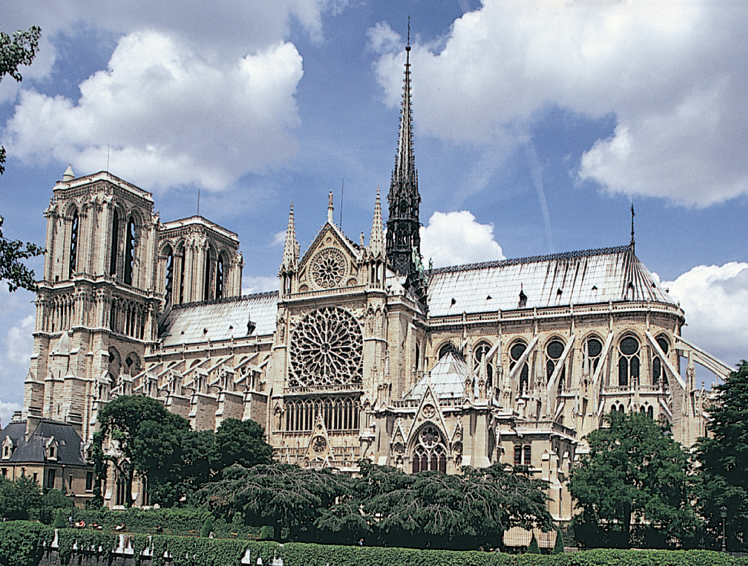Organum
The earliest type of polyphony is called organum (plural: organa). First described in music theory treatises around 900 C.E., actual organum has survived in musical notation from around 1000. Early organum consists of a traditional plainchant melody to which a composer/singer/improviser has added another melody, sung at the same time with the same words.
The history of organum provides a fascinating record of growing artistic ambition and technical invention. A number of clear stages can be identified between about 1000 and 1200 C.E.:
- Originally, the added melody (itself called “the counterpoint”) was sung closely parallel to the chant melody — that is, note against note with the same interval, or distance, between them. This is little more than singing along in thirds (or in octaves). The rhythm of this early, so-
called parallel organum was the free rhythm of Gregorian chant. - Soon the added melody (the counterpoint) was treated more independently — it would sometimes go up when the chant went down, and vice versa.
- Next, singers began to decorate the melody, using melismas — several notes at the same time as a single chant note. As more and more notes were crowded in, making richer and richer added melodies, the single chant notes were slowed down to surprising lengths, sounding finally like long drones.
- Someone then had the idea of adding two counterpoints to the chant. This certainly provided a more lush sound but required much greater skill, since the second counterpoint had to fit the first counterpoint as well as the chant.
- Perhaps to lessen the difficulty of having two counterpoints, definite rhythms, controlled by meter, replaced the chantlike free rhythms of the counterpoints —and ultimately of the underlying chant itself.
Organum of these last, highly developed kinds flourished at the Cathedral of Notre Dame in Paris, which was built slowly over the period 1163–
